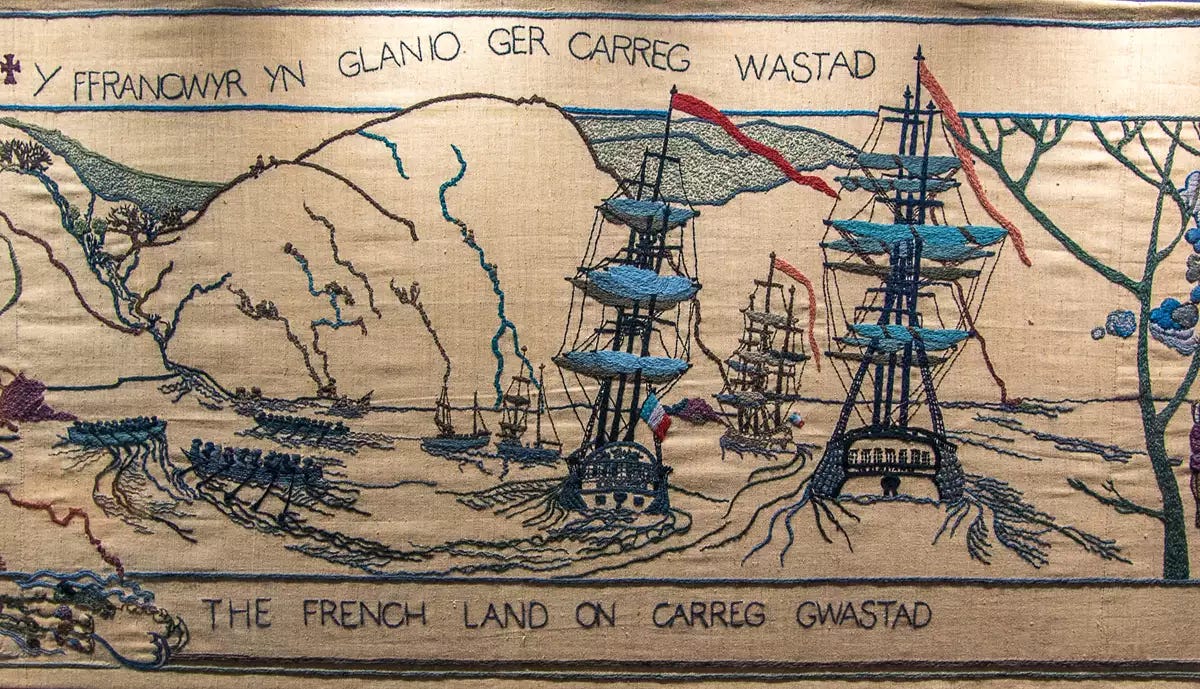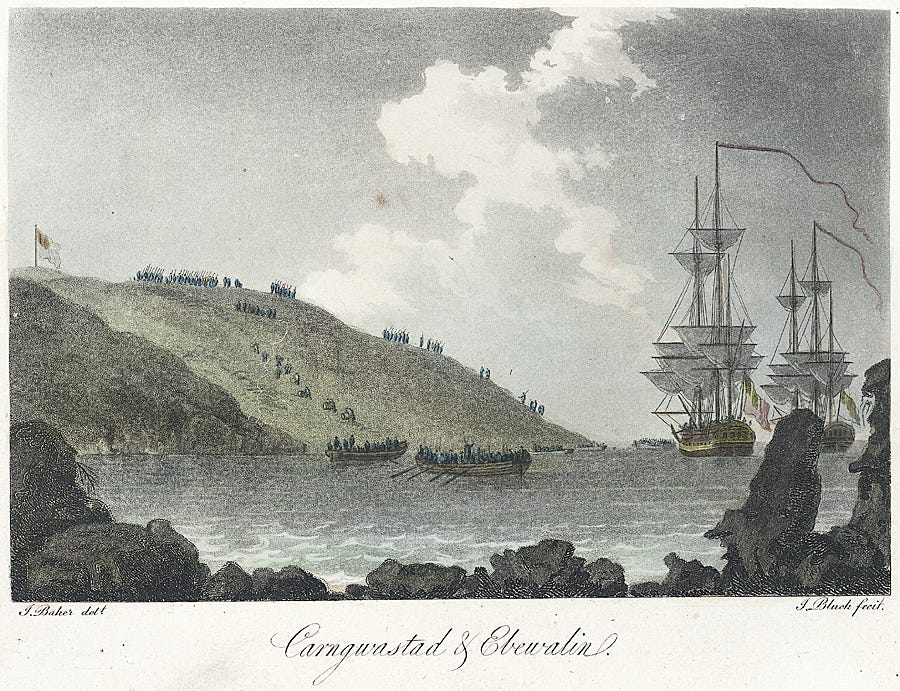The Fishguard Invasion
A Tale of Welsh Courage and Cunning
The year is 1797. The French Revolution rages, and across the Channel, a nation gripped by fear watches as Napoleon Bonaparte's armies conquer Europe. Britain, ever vigilant, braces for a French invasion. But when the invasion finally comes, it arrives not on the shores of Kent or Sussex, but in the small, unassuming Welsh town of Fishguard.

This seemingly insignificant event, often overshadowed by the Norman Conquest of 1066, was the last time a hostile foreign force landed on British soil, a testament to the courage and cunning of the Welsh people who repelled the invaders. The Fishguard Invasion of 1797 is not merely a historical footnote; it symbolises British resilience during a time of widespread fear and uncertainty, boosting morale and demonstrating the strength of local defence against a powerful enemy. This article delves into the historical accounts of this remarkable event, focusing on the local response and the often-overlooked role of women in defending their homeland.
The Invasion Begins
In the midst of the War of the First Coalition, French General Lazare Hoche devised a three-pronged attack on Britain in support of the Society of United Irishmen. Two forces would land in Britain as a diversionary tactic, while the main force would land in Ireland. Adverse weather and ill-discipline halted two of the forces, but the third, aimed at landing in Wales and marching on Bristol, went ahead.
On the afternoon of February 22nd, 1797, four French warships, the frigates Vengeance and Résistance (on her maiden voyage), the corvette Constance, and the lugger Vautour, some of the newest in the French fleet, appeared in Fishguard Bay flying Russian colors to deceive the British. Aboard these vessels were 1,400 troops known as "The Black Legion" due to their use of captured British uniforms dyed black. Under the command of Irish-American Colonel William Tate, a veteran of the American Revolutionary War, this force, officially the Seconde Légion des Francs, was a mix of 600 regular soldiers and 800 irregulars, including republicans, deserters, convicts, and Royalist prisoners. Many of these men were recently released convicts who had been offered freedom if they joined the invasion.

Their mission: to land in Wales, march on Bristol, and ignite a revolution in Britain. Colonel Tate himself was an intriguing figure, an American of Irish ancestry who had fought against the British and fled America after being involved in a French attempt to seize control of New Orleans.
The French initially intended to land at Fishguard harbour. However, gunners at the town's poorly-equipped fort fired blanks, dissuading them from entering the harbor. Instead, on a remarkably warm and clear day with a calm sea, they landed at Carregwastad Point, three miles northwest of Fishguard. By 2 a.m. on February 23rd, they had unloaded 17 boatloads of troops, 47 barrels of gunpowder, 50 tons of cartridges and grenades, and 2,000 stands of arms. The invasion had begun.
Keep reading with a 7-day free trial
Subscribe to Nostalgia Digital to keep reading this post and get 7 days of free access to the full post archives.

